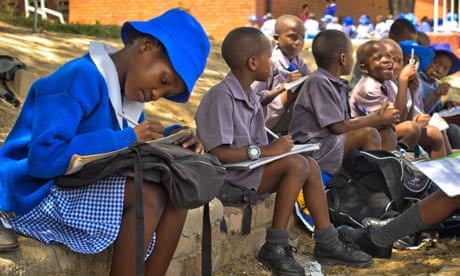Since 2000, Zimbabwe has had to confront multiple and complex challenges that had been partly due to the country’s social and political instability. Reaching a peak in 2008, the meltdown left everything, including education, in tatters, leading to the dropping of these crucial educational programs.
"Poor examination results suggest that the combined shortage of infrastructure, high pupil ratios, and lack of teaching and learning materials have had an adverse effect on the quality of learning,” Coltart said.
Textbook supplies, which had been largely financed by parents from levies and their own household income, have dropped to a record low. Unicef estimates that there are 15 children for each textbook in the core subjects in primary schools, while a recent survey showed that at least 12% cent of secondary schools had no maths textbooks at all in 2009.
Decreasing government expenditure on education has forced schools to increasingly rely on tuition fees and levies. The consequent rise in fees and levies has been a serious obstacle to educational access and completion for many school children. Lack of resources disproportionately affects the marginalized, especially girls. The use of student levies and fees to supplement salaries and retain teachers has exacerbated inequalities between students who can afford higher supplements and those from poor socioeconomic backgrounds.
Children in poorly infra-structured schools

No comments:
Post a Comment